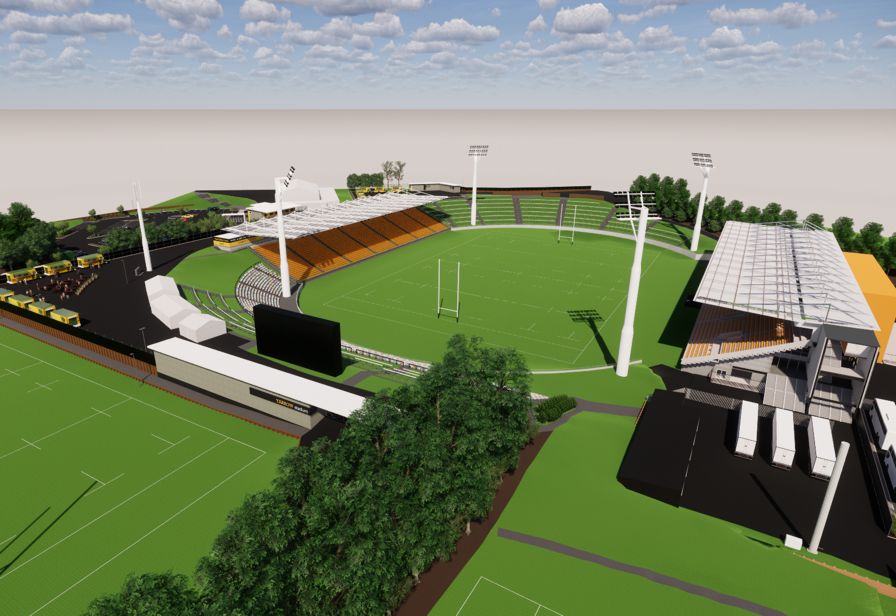Good progress is being made on the Yarrow Stadium repair and refurbishment project and no unexpected surprises have emerged so far, says the Taranaki Regional Council Chair, David MacLeod.

Artist's impression of repaired and refurbished Yarrow Stadium.
A project risk register has been developed and was discussed by Councillors last week.
“As with any project of this size and complexity, all the risks need to be identified and investigated, and measures developed to manage and mitigate them, if not eliminate them,” says Mr MacLeod.
It’s standard professional procedure to develop a risk register. Civil engineers and others with relevant qualifications and experience are well familiar with the concept. The risk register is a living document. As well as listing and rating the risks, it spells out mitigations. As the latter are implemented, risk ratings will change.
“In any project, you start by flagging all the risks – and there can be quite a list of them. The whole point of project management is to investigate how each risk can best be managed and mitigated, if not eliminated entirely – and then makes sure that this happens. So as the project proceeds, the number and severity of risks will reduce.
“And importantly, the risk register also allows Councillors to closely monitor progress and to satisfy ourselves that all appropriate measures are or will be put in place.”
The register covers risks ranging from the technical suitability and effectiveness of the detailed repair plans and the availability of the expertise and equipment needed to implement them, to the expected demand from users of the repaired and refurbished Stadium. Many of the items in the register would be common to all big projects of this nature.
Other progress on the stadium project to date includes:
- Applying for external Lottery Grants Board funding to reduce the rates required for the $50 million project. “We remain firmly focused on the $50 million project agreed to last year, “ says Mr MacLeod. “If we succeed in securing lottery funding, it won’t be used on anything outside the scope of the agreed $50 million project. It will lead to a direct reduction in the current Yarrow Stadium rates,”
- Asking potential civil-engineering contractors to register their interest in the project, so their capabilities can be assessed in advance of calling for tenders. These will be called upon the completion of peer reviews of the detailed design of the repairs to each of the earthquake-prone stands.
Mr MacLeod wants the community to understand clearly what the Council is seeking to achieve at the Stadium, and its reasons for doing so.
“Our original decision followed long and hard deliberation of two questions: Does Taranaki need an international-grade stadium? And if so, what needs to happen to achieve this?“
"The Council strongly believes that if Taranaki is to be a vibrant and thriving region, we need a venue that can host international events. So it is clear that Yarrow Stadium must be reinstated to what it was, with refurbishments that are necessary to meet current and foreseeable requirements for such venues.”
He says there was never a ‘$36 million option’.
“It’s simple: Without the refurbishments, the Stadium would not be fit for the sort of events the community wants and expects – they simply wouldn’t come here. So to repair the stands and do nothing else would be senseless.”
The Council’s vision for Yarrow Stadium:
- The best regional stadium in New Zealand that regularly hosts national and international sports and entertainment events.
- A stadium for both major events and community events and the premier outdoor field for team sports codes.
- A stadium that is loved by sports fans and the local community.
- A stadium that is a quality experience for event promoters, participants and spectators, which is achieved through superior event facilities, presentation and management and through the early adoption and smart use of technology.